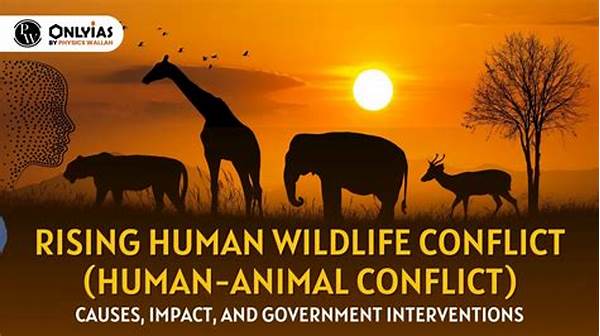The impact of military conflicts on wildlife is an urgent concern that requires immediate attention from global policymakers and conservationists. The threats to wildlife from military conflicts manifest in various forms, such as habitat destruction, pollution, and disruption of natural migration patterns. These conflicts often lead to a cascade of ecological consequences, adversely affecting biodiversity and ecosystem stability.
Habitat Destruction and Fragmentation
Military activities, such as the deployment of troops and machinery, often result in significant habitat destruction. The construction of military bases, roads, and other infrastructures further fragments habitats, preventing species from migrating and finding resources. The threats to wildlife from military conflicts are exacerbated by landmines and unexploded ordnance, which render vast tracts of land uninhabitable for humans and wildlife alike. Furthermore, such activities disrupt local communities that rely on these ecosystems, exacerbating socio-economic tensions. Addressing these issues requires a comprehensive approach that combines conservation efforts with conflict resolution strategies. Conservationists and military planners must collaborate to ensure that measures are in place to mitigate the adverse impacts on wildlife and preserve biodiversity in conflict zones. Effective policies and practices must prioritize ecological considerations alongside human security to sustainably manage these regions affected by military conflicts.
Pollution and Environmental Degradation
Disruption of Natural Migration Patterns
Conflicts and military operations often lead to the displacement of wildlife populations. The threats to wildlife from military conflicts become evident when species are unable to follow their traditional migratory routes, which are crucial for accessing food, breeding, and maintaining genetic diversity. The construction of barriers and other obstacles associated with military activities further impede these movements, leading to isolated populations and a loss of genetic flow. Consequently, species become vulnerable to inbreeding, which can lead to a decline in population health and an increased risk of extinction. The long-term effects of these disruptions can have profound implications for ecosystem dynamics and overall biodiversity.
Conservation Strategies in Conflict Zones
The Role of Peacebuilding in Wildlife Preservation
Peacebuilding plays a crucial role in addressing the threats to wildlife from military conflicts. Establishing peace not only promotes political stability but also facilitates environmental conservation efforts. By integrating environmental considerations into conflict resolution processes, stakeholders can ensure that ecological integrity is maintained during and after military activities. Peacebuilding initiatives provide opportunities for collaborative conservation strategies that involve local communities, military personnel, and environmental organizations. These collaborative efforts can lead to sustainable solutions that benefit both human society and wildlife. Restoring peace in conflict zones offers a possibility for reconstructing damaged ecosystems and developing management plans that prioritize biodiversity conservation.
The Global Significance of Protecting Wildlife in Conflict Zones
Globally, the threats to wildlife from military conflicts pose significant challenges to biodiversity conservation and ecosystem health. As conflicts continue to arise in various regions, international cooperation becomes imperative to address these issues effectively. Protecting wildlife in conflict zones is a global responsibility that requires concerted actions from nations, organizations, and individuals. Efforts to conserve biodiversity have far-reaching implications for sustainable development, climate regulation, and cultural heritage. Global initiatives that prioritize wildlife protection in military conflict areas can contribute to achieving broader conservation goals and maintaining ecological balance on a planetary scale.
Summary
The threats to wildlife from military conflicts encompass a range of issues, including habitat destruction, pollution, and disruption of natural migration patterns. Addressing these challenges demands an integrated approach that balances military operations with ecological considerations. Conservation strategies, such as establishing wildlife corridors and implementing waste management regulations, are essential for mitigating the adverse impacts of military activities. Collaborative efforts between governments, NGOs, and local communities play a vital role in promoting sustainable practices and long-term commitment to biodiversity preservation.
Moreover, peacebuilding initiatives that incorporate environmental considerations offer valuable opportunities for protecting ecosystems in conflict zones. By restoring peace and stability, stakeholders can develop management plans that prioritize wildlife conservation and benefit both human society and natural habitats. Globally, the protection of wildlife in conflict zones is crucial for maintaining biodiversity and ecological balance. International cooperation and coordinated efforts are necessary to safeguard natural resources and ensure a sustainable future for all species. Ultimately, addressing the threats to wildlife from military conflicts requires a comprehensive, multi-faceted approach that integrates conservation principles into military and peacebuilding strategies.





